Brazil. Part II. Curitiba—LondrinaMap
January An interesting bit of signage on the road: countdown numbers before very sharp turns. 3—2—1—sudden turn. Gives you time to prepare. 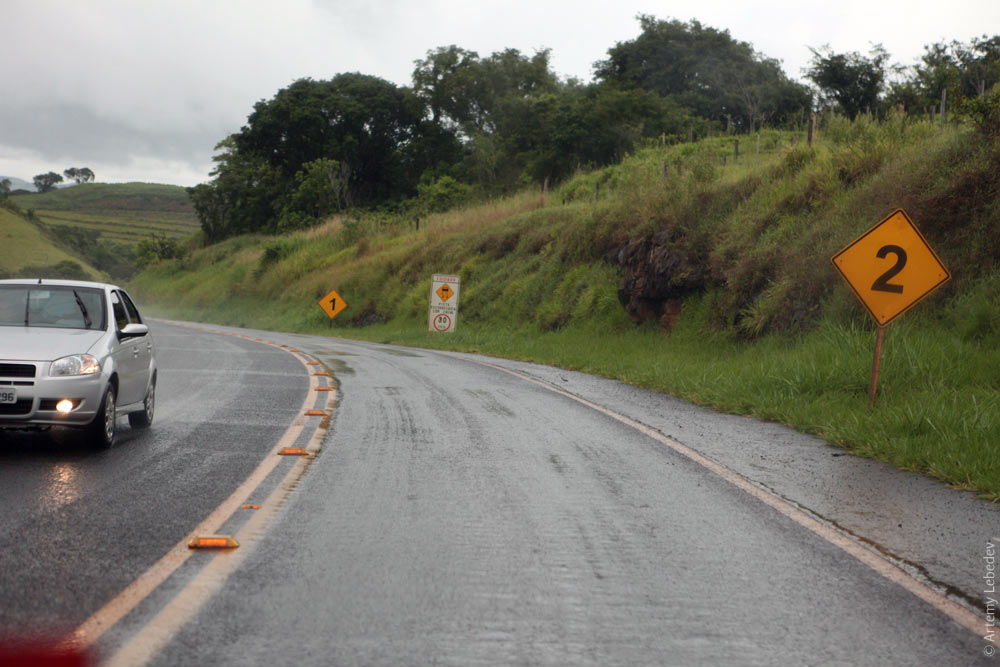 CuritibaMapA city with a high quality of life. 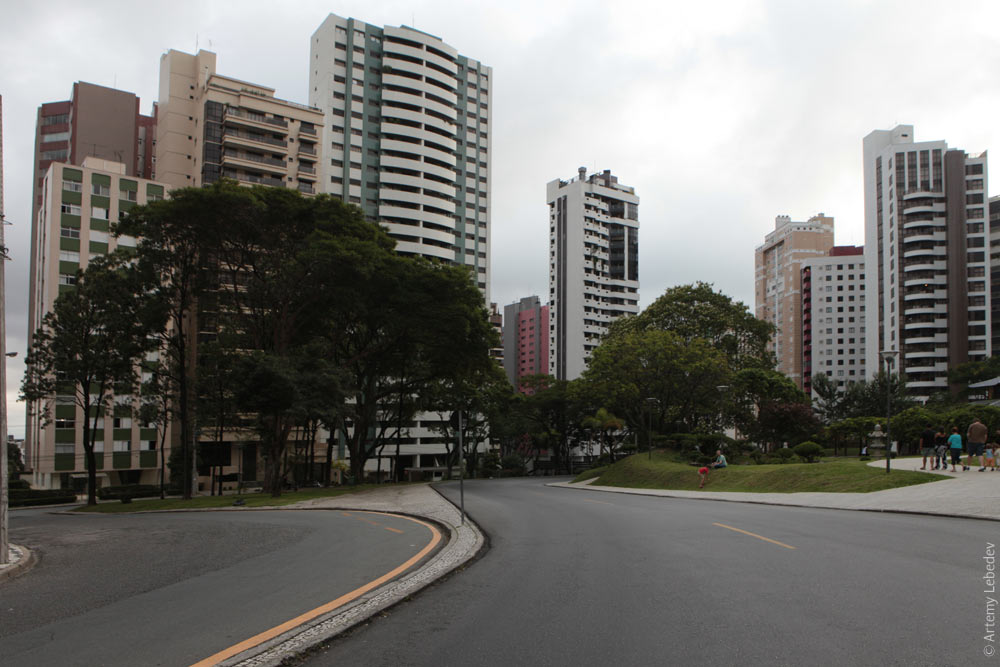 Of course, any vacant buildings still end up covered with Brazilian graffiti, but there are very few of them here. 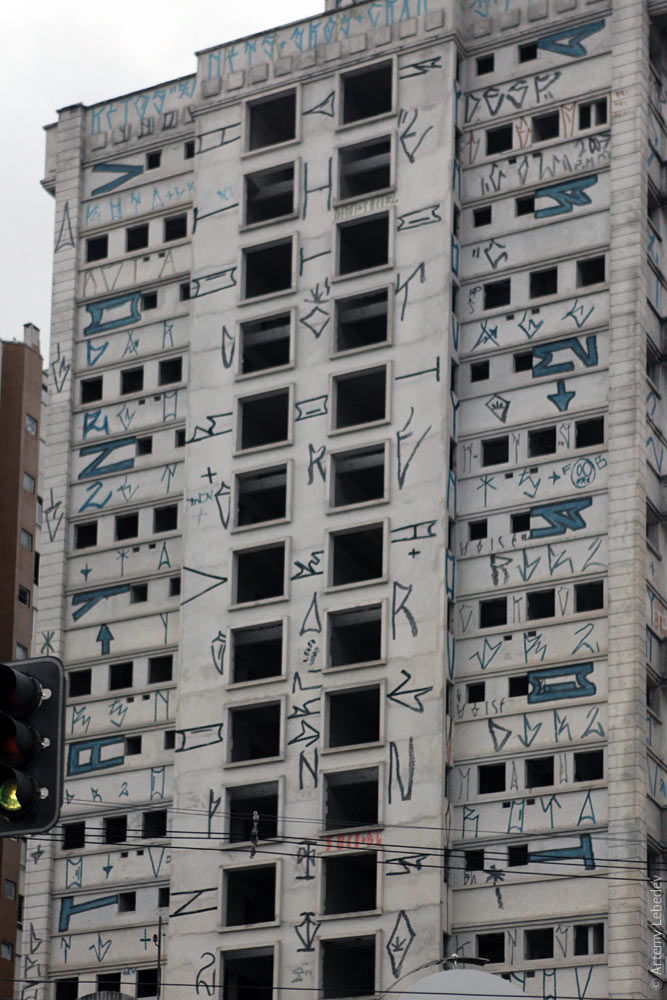 There’s even a microscopic historic area downtown. 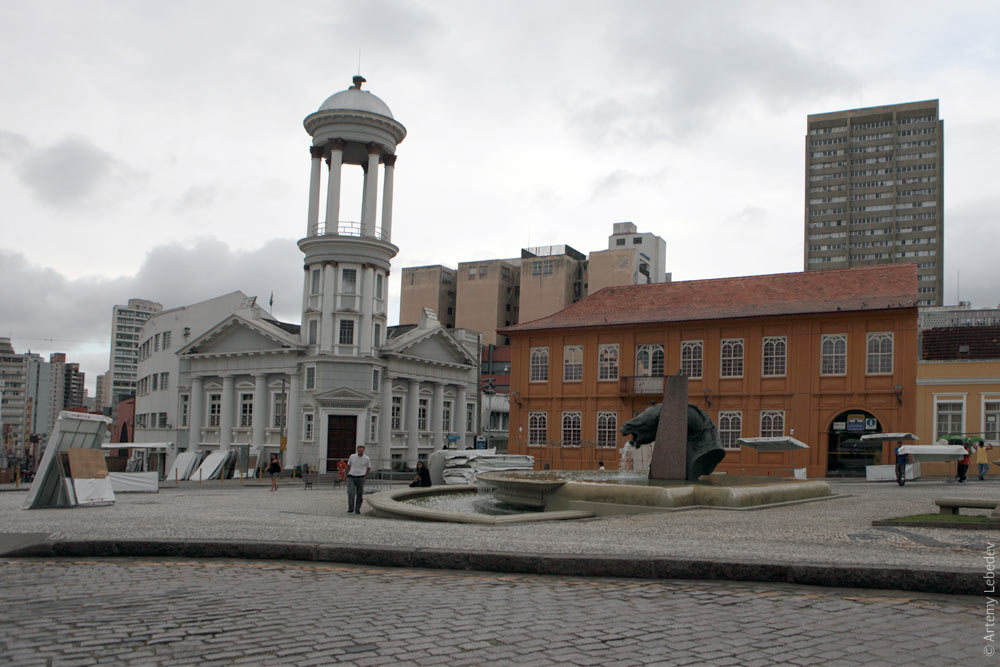 But the city’s main asset is its sophisticated bus system. In 1971, Jaime Lerner, who until then had worked at the local institute of urban planning, became Mayor of Curitiba. His time to shine had come. Some of the streets were reserved for buses and closed off to all other traffic. The need for a metro vanished completely. 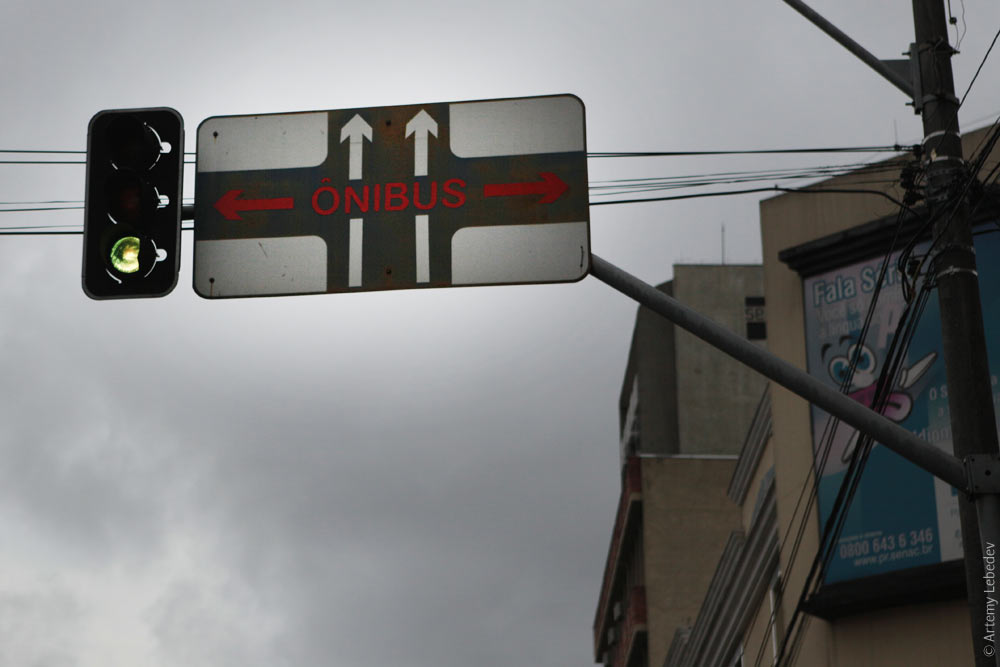 Lerner’s chief invention was the glass tube-shaped bus stop. (The style of Brazilian graffiti tags drives me nuts—it’s worse than little dancing men.) 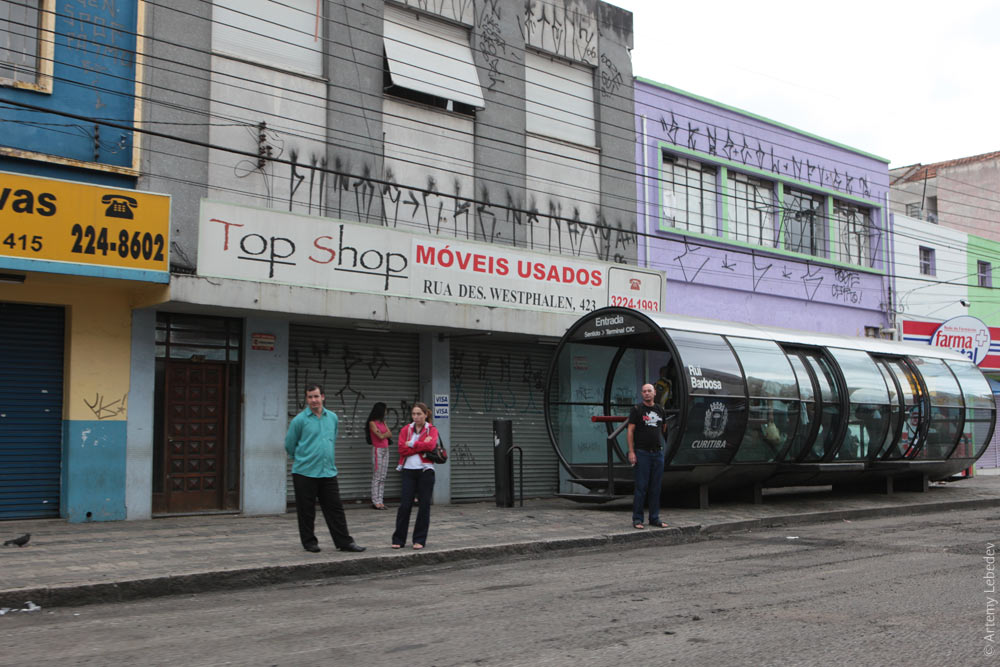 The primary objective of such stops is to collect the fare before the passenger boards the bus. Each glass tube has a turnstile and a cashier at the entrance. When the bus arrives, everyone can quickly board without creating a jam. The driver doesn’t have to oversee fare collection—all he has to do is drive. 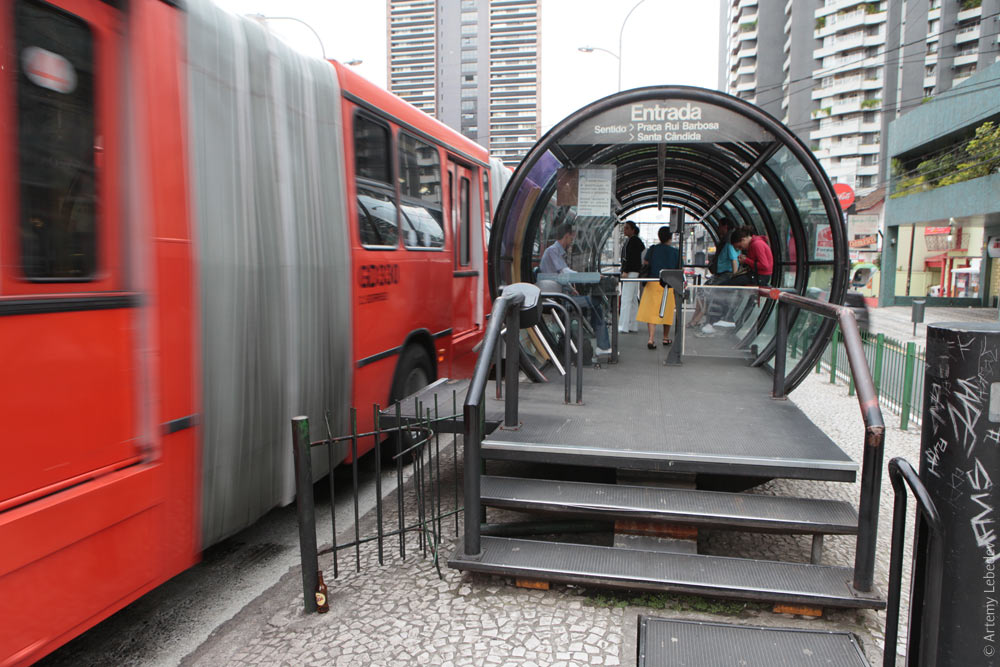 The doors on the buses are situated fairly high up, about a meter above the ground. They have a special design: first, a ramp extends from each doorway towards the stop, and only then do the doors open. Speaking of which, Brazilian ramps for the handicapped usually have a handicapped pictogram drawn on them.  The bus transit system is incredibly efficient. First of all, the buses run very frequently. Second, they’re fast. Third, they have a large passenger capacity (there are two accordion joints on each bus). Fourth, they’ve made sure to accommodate everyone’s needs here: there’s even a bus which circulates between all the hospitals. 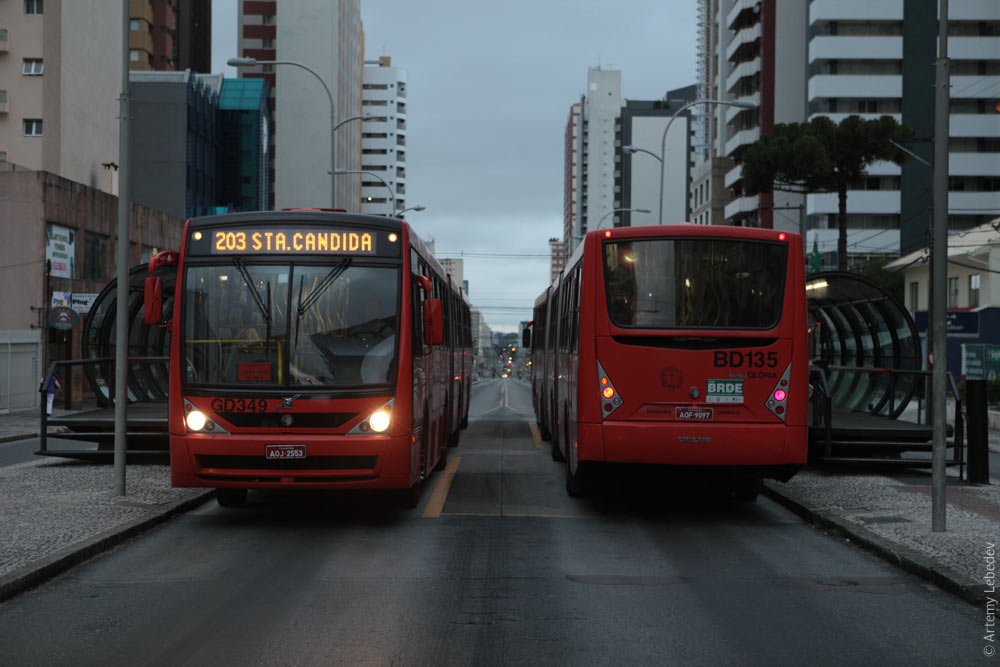 The design of the bus stops has essentially become a symbol of the city. All new stops are therefore built to look the same way.  A carrot-orange Curitiba taxi with a small checker pattern. Residents of Australia would mistake it for a police car. 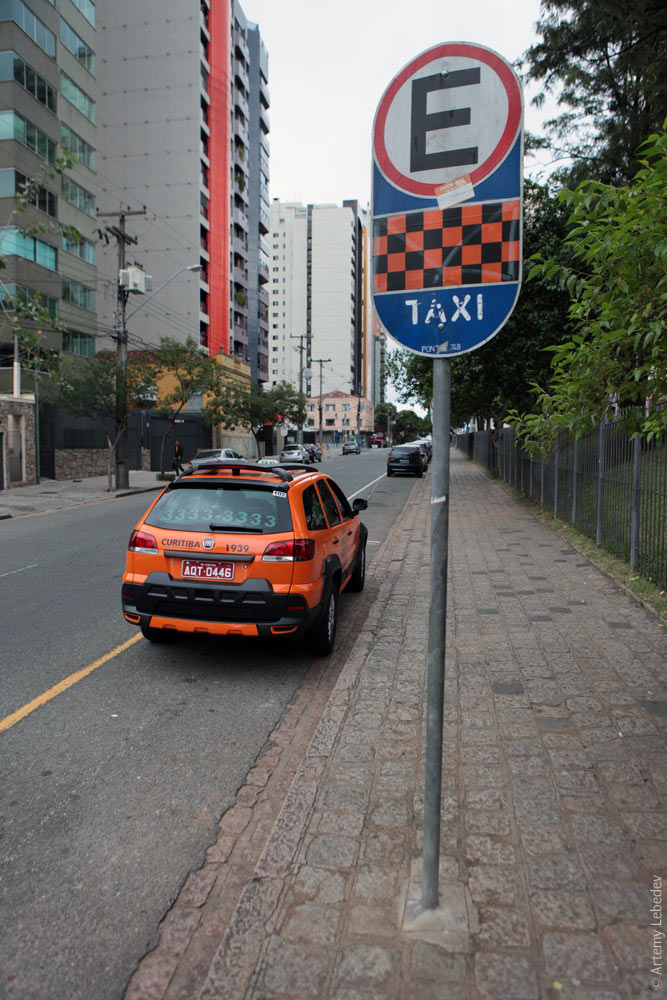 For some reason, the tops of the traffic light visors are worn down to the metal. Perhaps they’re scrubbed with excessive zeal when they’re cleaned, or maybe they fade from the rain over time. Either way, it remains a mystery. 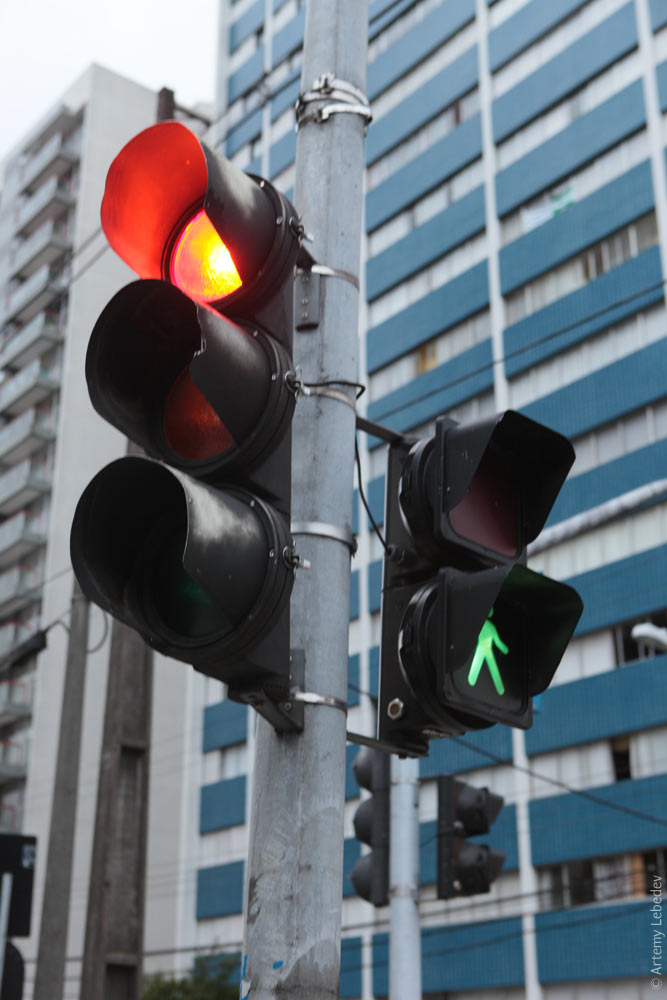 There are post boxes on every corner in Brazil. All of them are the same pretty yellow color. 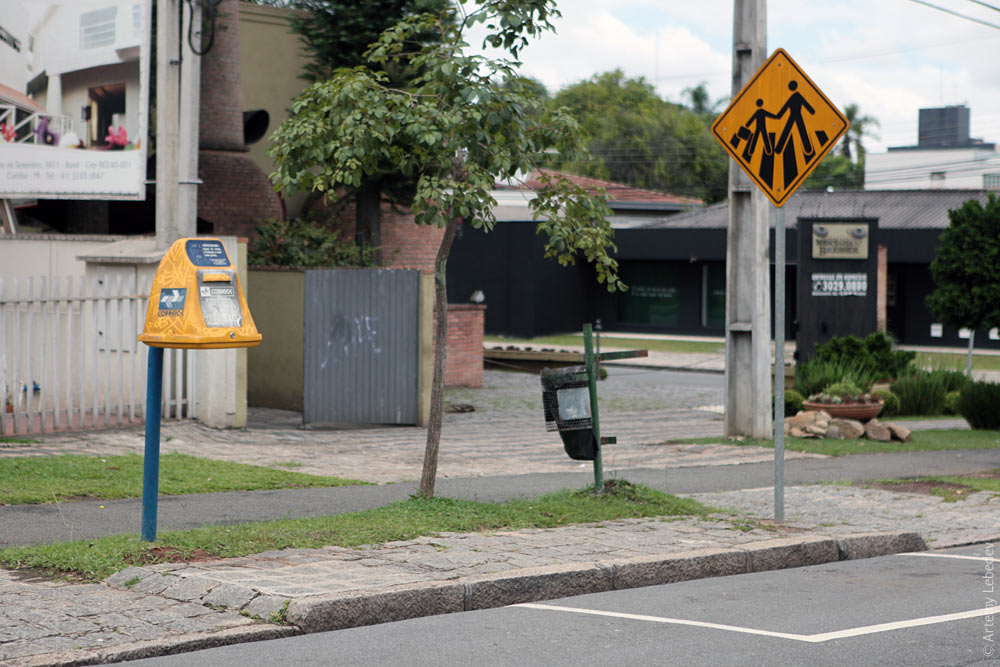 Curitiba, like every other Brazilian city, has advertising structures with a clock and an ad which all look similar and resemble giant pagers. 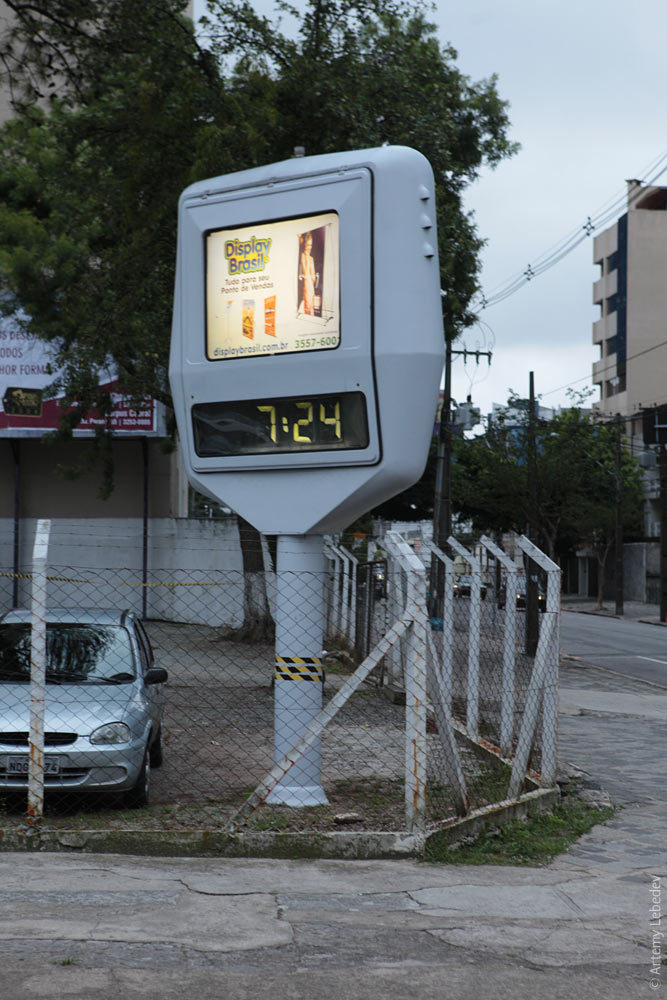 The city is quiet, green, and very livable. But there’s nothing to do here. LondrinaMapLondrina means “little London” in Portuguese. 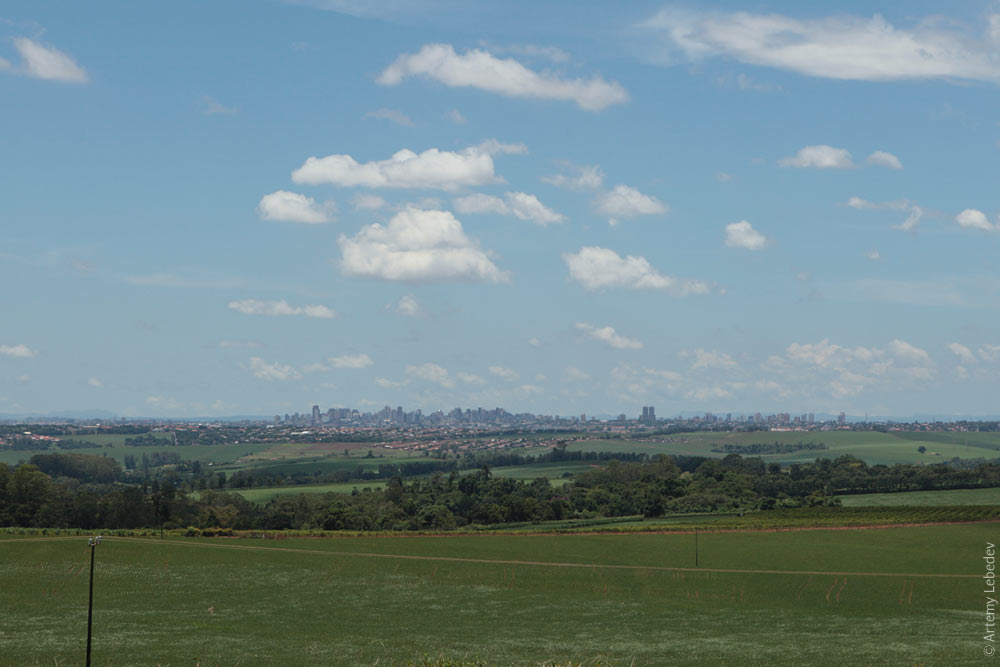 But there’s nothing resembling big London here.  A fire hydrant, Londrina’s municipal trash cans, and a phone booth. 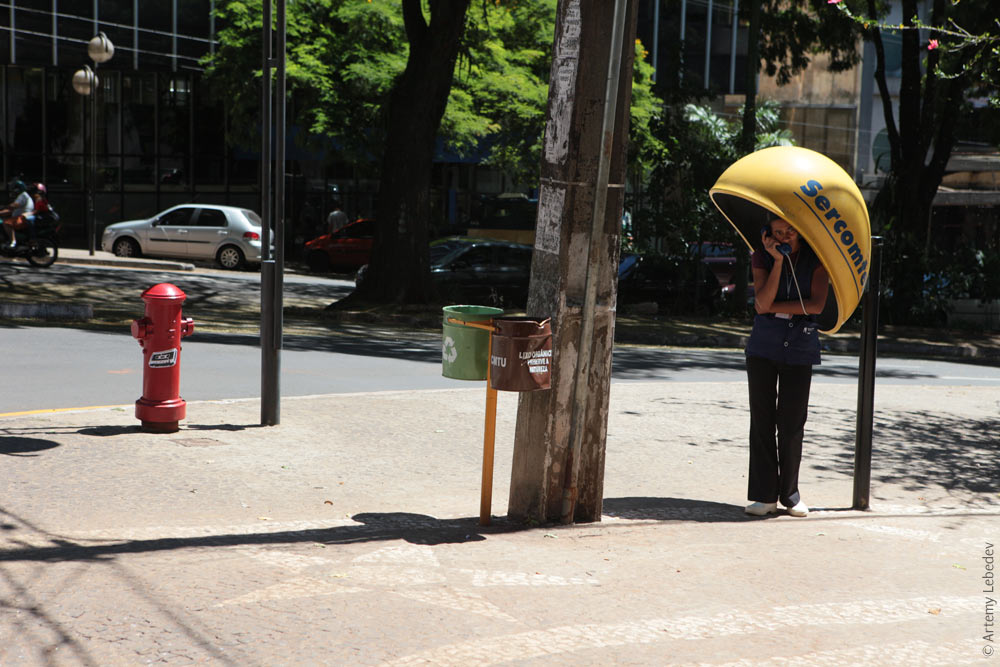 Pesky salesmen hang dubious-looking candy bars for one real each over the mirrors of cars waiting at the light. Some people decide to purchase the goods while they have them in front of their eyes. The pests then quickly collect all the unsold candy before the light turns green. 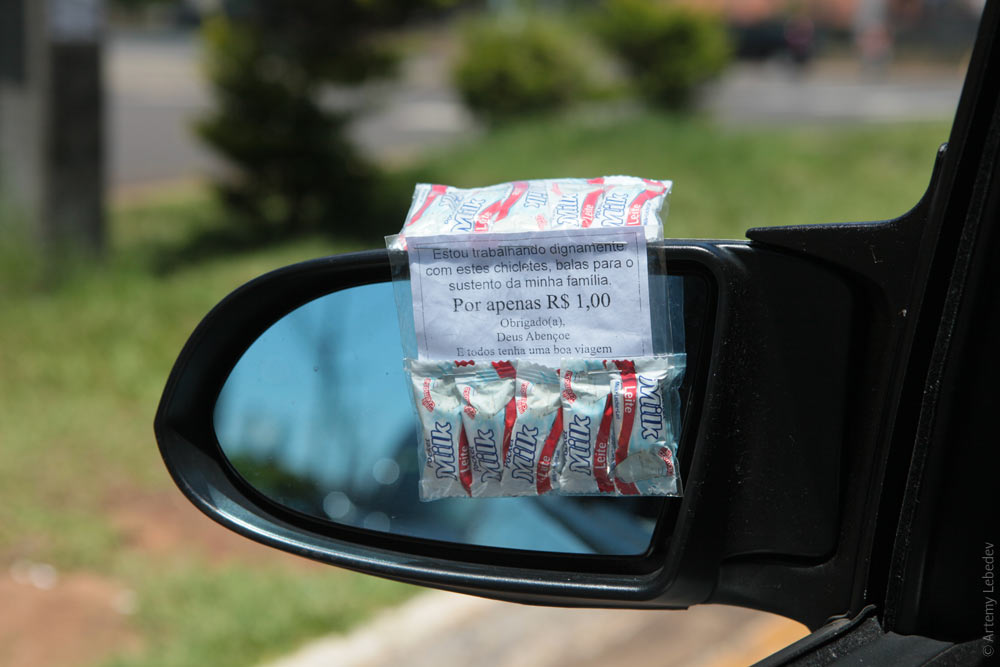 Stamps, meanwhile, are sold only at the post office. Explaining to the clerk that I need stamps and postcards is no easy task: I have to act out a little scene, gesticulate, and nod when I discern echoes of familiar Indo-European roots in the Portuguese. 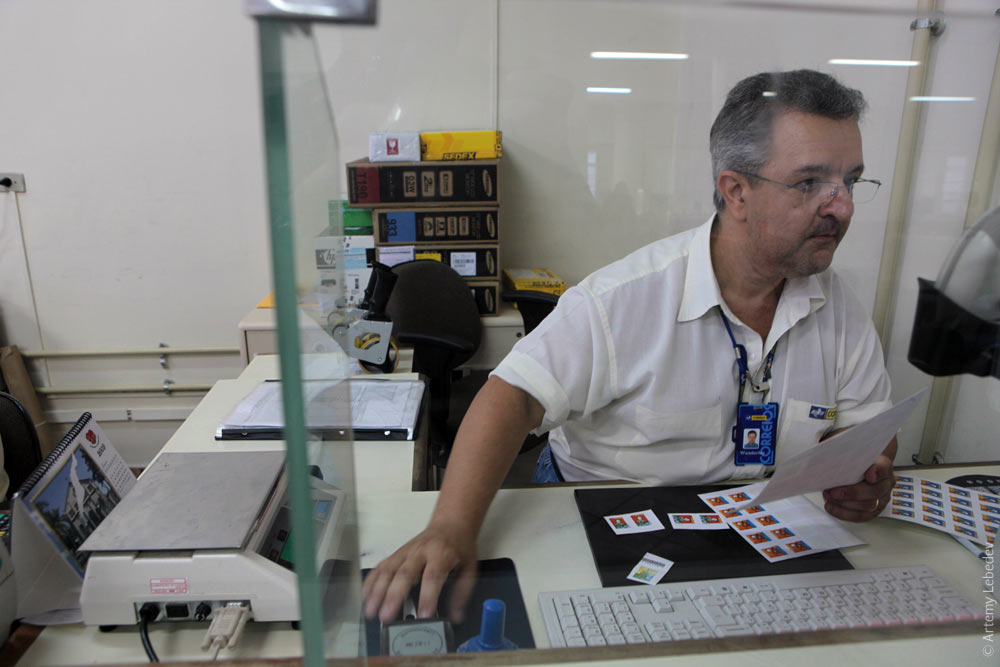 A typical street food joint. It sells pastries (very similar to our flaky pastries with a meat filling) and fresh-squeezed juice. At first I thought that the oranges here must be really sweet, but it turns out that Brazilians are in the habit of adding sugar to their juice. They squeeze an orange, throw in a couple tablespoons of sugar and some ice, and run the whole thing through a blender. The result is sweet, cold orange juice. 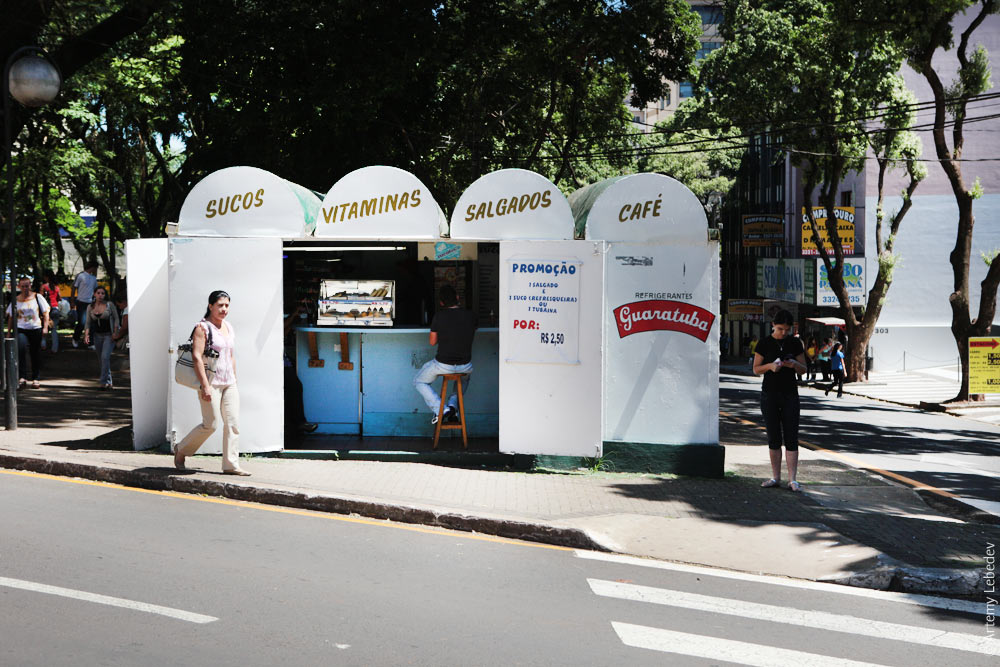 Road work warning signs begin well in advance—not 15 meters before the work zone like in Russia. 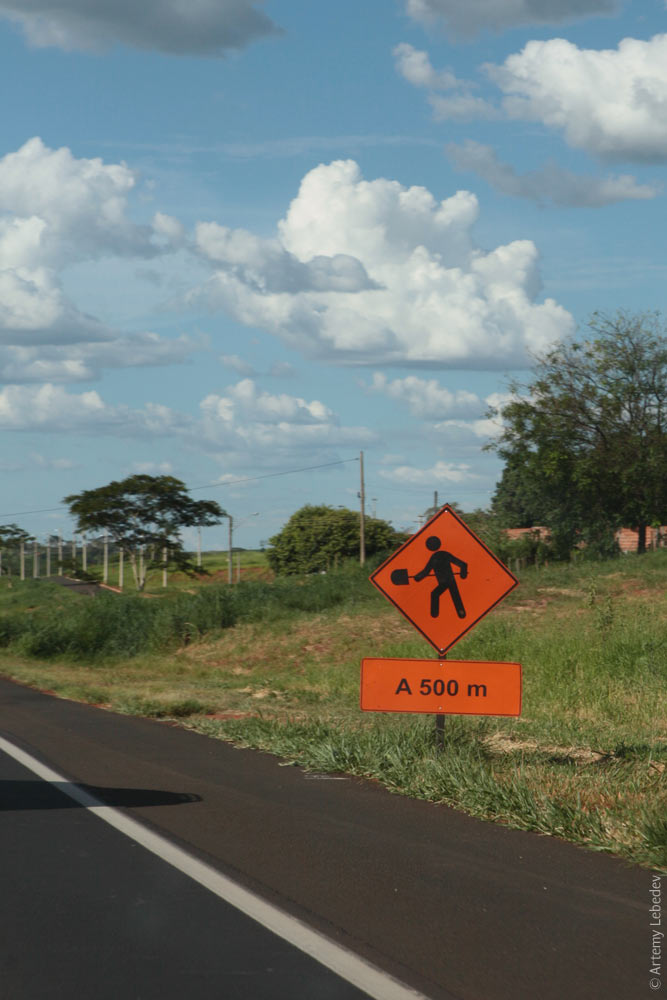 Practically all the trucks in Brazil are equipped with an automatic tire inflation system, even the old ones. 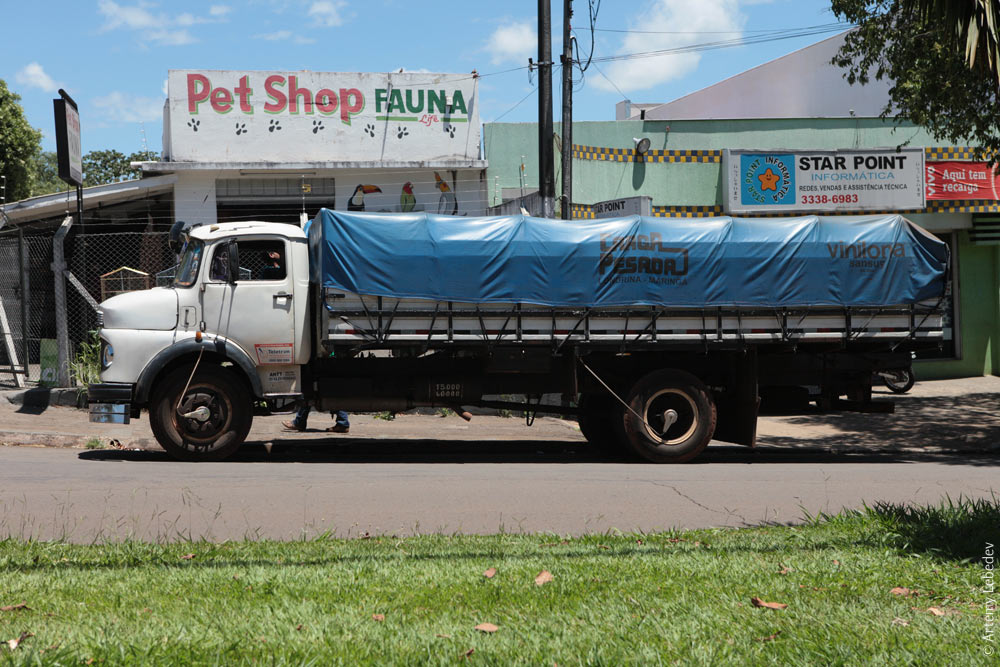 The view outside the window is pretty. 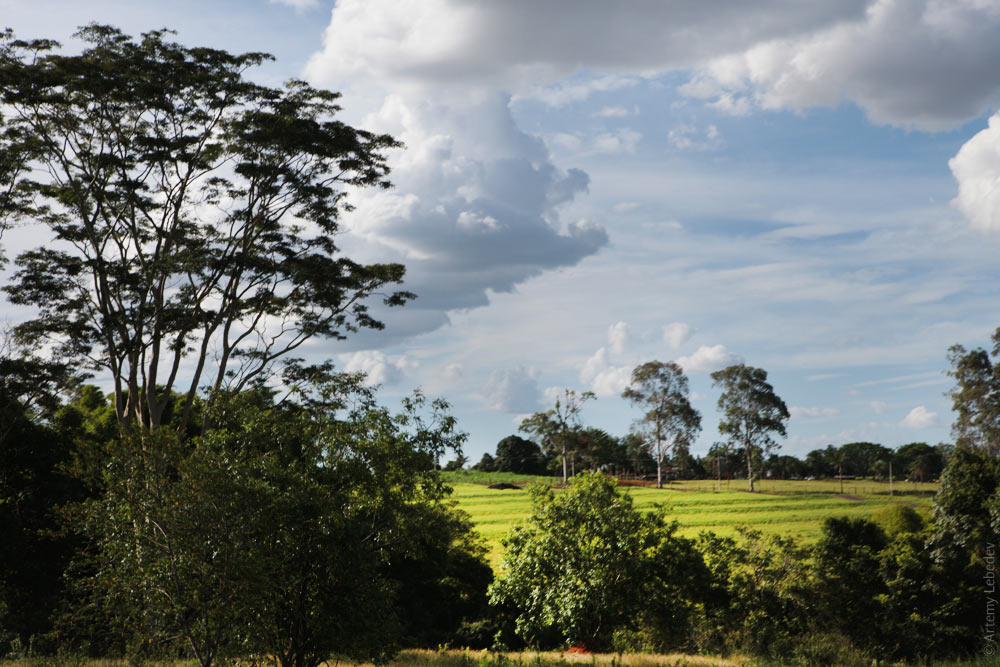 |